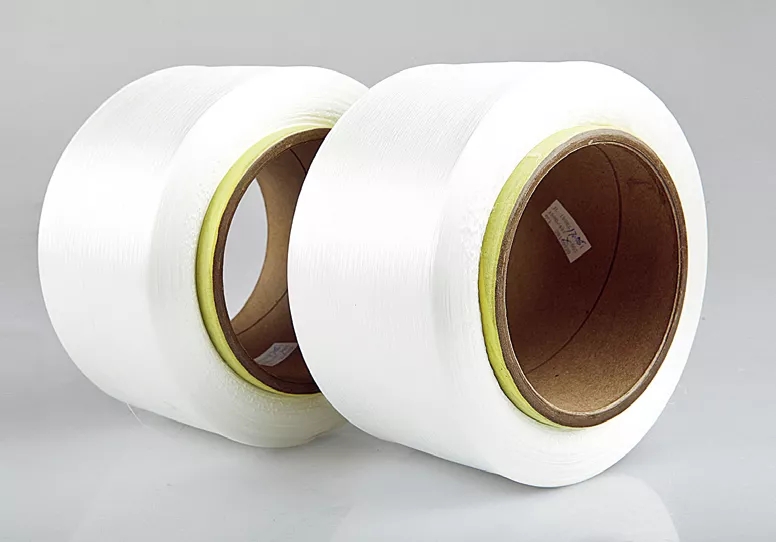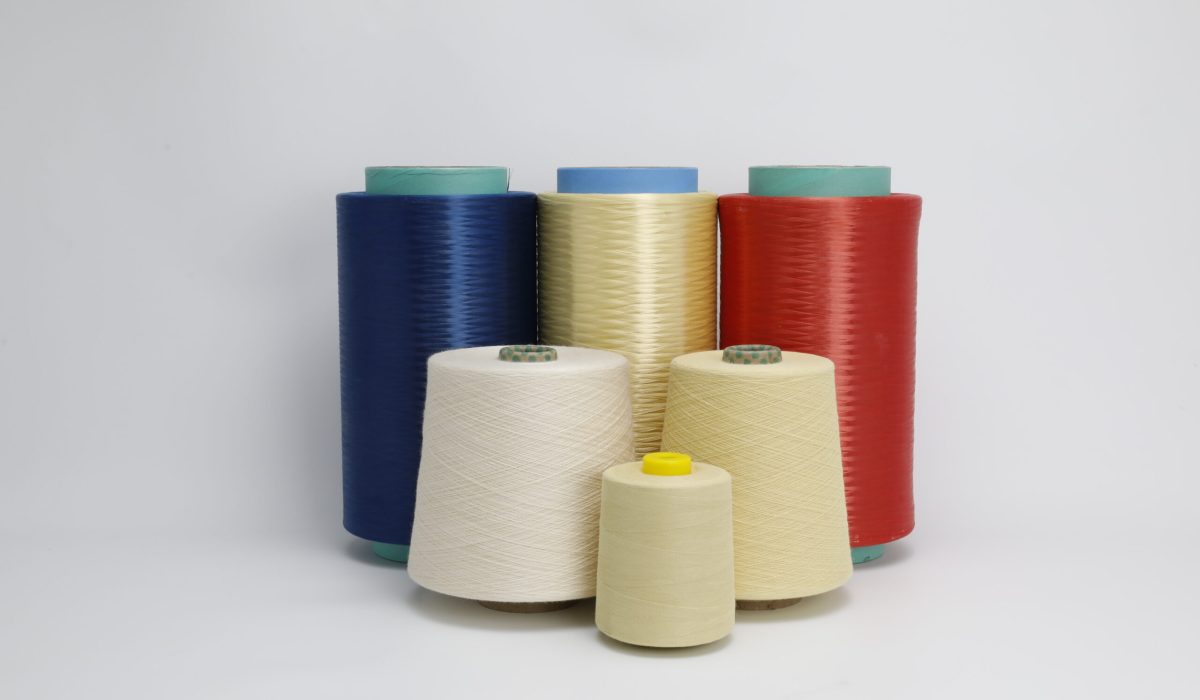The first category: chemical fiber picture Chemical fibers include two subcategories: synthetic fibers and man-made fibers Synthetic fibers refer to: nylon, spandex, polyester, acrylic, vinylon, polypropylene, polypropylene, ethylene, aramid, Lycra, stretch frame, microfiber Man-made fibers include two subcategories: inorganic fibers and regenerated fibers. Among them, inorganic fiber refers to: glass fiber metal fiber Regenerated fiber refers to: viscose fiber, acetate fiber.
The second largest category: natural fibers picture Natural fibers include three subcategories: plant fiber, animal fiber, and mineral fiber. Among them, plant fibers refer to: linen, cotton (cotton), colored cotton, fruit fiber Animal fibers refer to: silk (silk), rabbit hair fiber, wool (wool) Mineral fiber refers to: asbestos
Category: chemical fiber/synthetic fiber/

Nylon
The hygroscopicity of nylon fabric is better than that of synthetic fiber fabrics, so clothing made of it is more comfortable to wear than polyester clothing. It has good moth resistance and corrosion resistance. The ironing temperature should be controlled below 140 degrees Celsius. During wearing and use, you must pay attention to the washing and maintenance conditions to avoid damaging the fabric. Among synthetic fiber fabrics, they are only listed after polypropylene and acrylic fabrics.
Spandex
Clothes made of spandex fabric have good feel and appearance, and the outer fiber composed of natural fibers has good hygroscopicity. Spandex began industrial production in 1959. It mainly weaves elastic fabrics. Of course, spandex yarn is usually combined with other fibers. After being spun into core-spun yarn, it is used for weaving.

Polyester
Polyester fabric has high strength, low hygroscopicity, and impact resistance that is 4 times higher than nylon and 20 times higher than viscose fiber. The elasticity is close to that of wool, and its wrinkle resistance exceeds that of other fibers, that is, the fabric does not wrinkle and has good dimensional stability. Good heat resistance. Polyester has a smooth surface and poor moisture absorption properties. The abrasion resistance is second only to the best nylon and better than other natural and synthetic fibers.
Acrylic
Acrylic fabric has better elasticity, second only to polyester and about 2 times higher than nylon. Has better shape retention. Although its strength is not as strong as polyester and nylon, it is 1 to 2.5 times higher than wool. It has excellent heat resistance, with a softening temperature of 190 to 230 degrees Celsius, second only to polyester among synthetic fibers.
Vinylon
Clothing made of vinylon fabrics is not only strong, but also has good mildew resistance, sunlight resistance and warmth retention properties. However, it has poor elasticity and dyeability, is easy to wrinkle, has a large shrinkage rate, and has poor heat resistance. Suitable for manufacturing various clothing textiles, household fabrics, fishing nets, ropes, canvas, etc. The biggest characteristic of vinylon fiber is its high hygroscopicity, which is the best among synthetic fibers and is known as “artificial cotton”.
Chlorine
The outstanding advantages of chlorine fiber fabric are that it is flame retardant, warm, light-fast, abrasion-resistant, corrosion-resistant and moth-resistant, and has good elasticity. It can be used to manufacture various sexy clothing products, knitwear, work clothes, blankets, filter cloths, chenille, and tents. Etc., especially because it has good warmth retention properties and is easy to produce and maintain static electricity, knitted underwear made of it has certain curative effects on rheumatoid arthritis.
Polypropylene
The biggest advantage of polypropylene is its light texture. It is the lightest density among common chemical fibers. Therefore, clothing made of polypropylene of the same weight can have a higher coverage area than other fibers. It has strong stretchability, light weight, good warmth retention, very little hygroscopicity, almost no moisture absorption, and the moisture regain rate is close to zero. Its anti-aging properties can be improved by adding an anti-aging agent during spinning.

Ethylene
The fiber strength and elongation of ethylene fiber are close to that of polypropylene. The fiber density is smaller. The moisture absorption capacity is the same as polypropylene. The moisture regain is 0. The dyeability is very poor. It has relatively stable chemical properties, good chemical resistance and corrosion resistance. It has poor heat resistance, but good moisture and heat resistance. Its melting point is lower than other fibers, it has good electrical insulation, and its light resistance is the same as polypropylene.

Aramid pulp is obtained by surface fibrillation treatment of aramid fibers. Its unique surface structure greatly improves the adhesion of the mixture, so it is very suitable for use as a reinforcing fiber in friction and sealing products. , high strength, good dimensional stability, non-brittle, high temperature resistance, corrosion resistance, toughness, small shrinkage, good wear resistance, large surface area, can be well combined with other substances, and is a reinforcing material.
Lycra
Lycra is actually a derivative of spandex fiber. It completely replaces the traditional elastic elastic thread. In clothing with special requirements such as sexy clothes, gymnastics clothes, and swimsuits, Lycra is almost an indispensable element. It allows you to show off your curves, and the gel can stretch freely without any sense of oppression. The English name of Lycra is “Lycra”, so some people translate it as “Lycra”, that is, the “sliding surface cradle” and “mesh cradle” on the market are actually Lycra fabrics, that is, spandex fiber.
Superfine fiber
Towel products made of microfiber are soft and comfortable to the touch, and will not harden after being washed for a long time. At the same time, they can penetrate deep into the pores to clean dirt, grease, and residual cosmetics in the skin. It also has a strong cleaning ability for cleaning items, does not cause pilling, does not shed lint, and has a certain polishing effect. Because microfiber has better performance than pure cotton, silk, etc.
Category: natural fiber/plant fiber/
Numb
Hemp fiber is strong, soft and fine, with good color and luster. The fiber is strong, not easy to rot in water, and has waterproof effect. In addition, it is resistant to friction, high temperature, fast heat dissipation, low dust absorption rate, not easy to tear, and not easy to burn. , has unique advantages such as no static electricity and high acid and alkali resistance. The hemp fabric material is similar to human skin and has natural properties such as protecting the human body and regulating temperature.
Cotton
Cotton fiber has high strength, good wrinkle resistance, poor stretchability, good heat resistance, second only to linen, poor acid resistance, resistance to dilute alkali at room temperature, good affinity for dyes, easy dyeing, and complete chromatography , the color is also brighter. Cotton has very good hygroscopicity, moisture retention, heat resistance, and alkali resistance. The disadvantage of cotton is that it is prone to lint. A new type of high-count and high-density cotton emerging on the market eliminates these worries. According to reports, this kind of cotton with a tight structure is soft, comfortable and resistant to washing. After many years of use, it remains delicate and smooth, does not form lint, and does not shrink or fade.
Colored cotton
Natural colored cotton fiber is soft and feels good. Its clothing has soft color, simple style, pure texture, comfortable feeling and safety. It is in line with people’s mentality of returning to nature and natural colors. Therefore, its textiles can be called “the darling of the 21st century” and are known as “Women’s second healthy skin” caters to the needs of the market and is one of the products with the greatest development potential in the international green textile market in the 21st century.
Fruit fiber
The fruit fiber fabric has the effects of dispelling wind and dehumidification, activating blood circulation and reducing swelling, dispersing joints and relieving pain. It is ultra-light and soft, natural hollow, ecologically antibacterial, mildew-proof and moth-proof, moisture-absorbing and moisture-conducting, mite-repelling, anti-static, and non-pilling. It is all natural. characteristic. It is the green ecological fiber with the lightest and highest hollowness among natural fibers at present. It has a smooth surface, no twist, bright luster, good acid resistance and good alkali resistance.
Category: natural fiber/animal fiber/
Silk
Silk fabric has an elegant and soft appearance, like the luster of pearls. Clothes made with it not only feel soft, smooth and elastic, but are prone to wrinkles. The appearance of imitation silk is not as soft as real silk, is more dazzling, feels stiff and prone to creases. And it is not easy to restore to its original state. The varieties of silk fabrics generally include crepe de chine, heavy crepe, georgette burnt-out, georgette, double georgette, heavy georgette, sangbo satin, plain satin, stretch plain satin, warp knitting, etc. woolen material Woolen material, also known as woolen fabric, has a soft color, rich hand feel, good body elasticity, and is strong and durable. The surface of the fabric is smooth and clean, and the texture is fine and clear. The luster is soft and natural, and the color is pure. Pinch the dough tightly with your hands and loosen it. The crease will not be obvious and it can quickly return to its original shape. It has the good elasticity, softness, unique shrinkage and wrinkle resistance unique to animal hair. It also has warmth retention properties after absorbing moisture or sweat. The finished garments are strong and durable, do not deform for a long time, are particularly solemn due to the absence of aurora, have smooth texture, elegant and crisp appearance, full touch, classic style, and natural and soft luster. They are high-end professional attire. Fabric of choice.
Category: natural fiber/mineral fiber/
Asbestos
At present, there are nearly 3,000 kinds of asbestos products or products containing it, which are mainly used in mechanical transmission, braking, heat preservation, fire protection, heat insulation, anticorrosion, sound insulation, insulation, etc. The more important ones are automobiles, chemical industry, electrical equipment, construction industry and other manufacturing sectors. Bo Lei Xiu found that because the fiber can cause asbestosis, pleural mesothelioma and other diseases, many countries have chosen to completely ban the use of this dangerous substance, and some other countries are reviewing the dangers of asbestos.
Category: chemical fiber/artificial fiber/inorganic fiber
Glass fiber
Glass fiber has high tensile strength, high elastic coefficient and good rigidity. It has large elongation within the elastic limit and high tensile strength, so it absorbs large impact energy. It is an inorganic fiber, non-flammable and has good chemical resistance. It has low water absorption, stable dimensions, good heat resistance, and good processability. It can be made into products of different shapes such as strands, bundles, felts, and woven fabrics. Transparent allows light to pass through. A surface treatment agent with good adhesion to resin has been developed and is cheap.
Metal fiber
Metal fiber fabrics refer to fabrics made by woven metal threads into cotton, linen, brocade, polyester and other fibers and treated with special processes. The surface of the fabric has a shiny and noble metallic luster, a unique style, a smooth and soft feel, and a unique memory wrinkle effect, giving it a wrinkled feel.
Category: chemical fiber/man-made fiber/
Regenerated fiber
Viscose fiber The chemical composition of viscose fiber is similar to cotton, so it is more resistant to alkali than acid, but its alkali and acid resistance are worse than cotton. Similarly, the dyeability of viscose fiber is similar to that of cotton, with a full dyeing spectrum and good dyeing performance. In addition, the thermal properties of viscose fiber are similar to cotton. It uses natural cellulose as raw material, undergoes alkalization, aging, yellowing and other processes to make soluble cellulose xanthate, then dissolves it in dilute alkali liquid to make viscose, and is made by wet spinning.
Acetate
Acetate filament has good luster, soft and smooth feel, good drape, and strong silk feel. Suitable for making sexy underwear, bathrobes, children’s clothing, women’s clothing and interior decoration fabrics, etc. Short fibers are used for blending with cotton, wool or other synthetic fibers. The fabric is easy to wash and dry, and is mildew- and moth-free.



